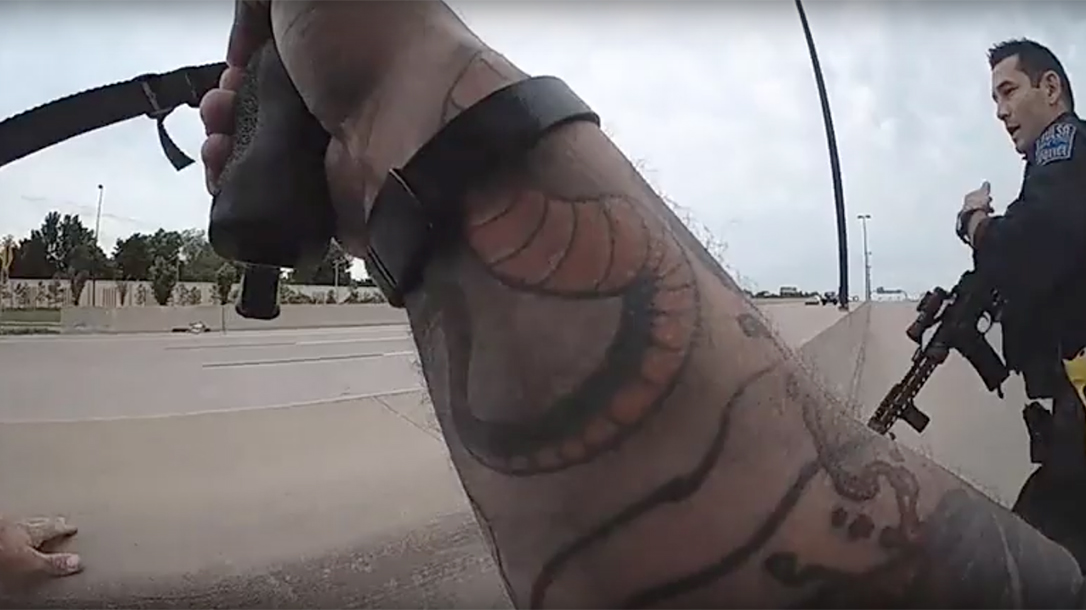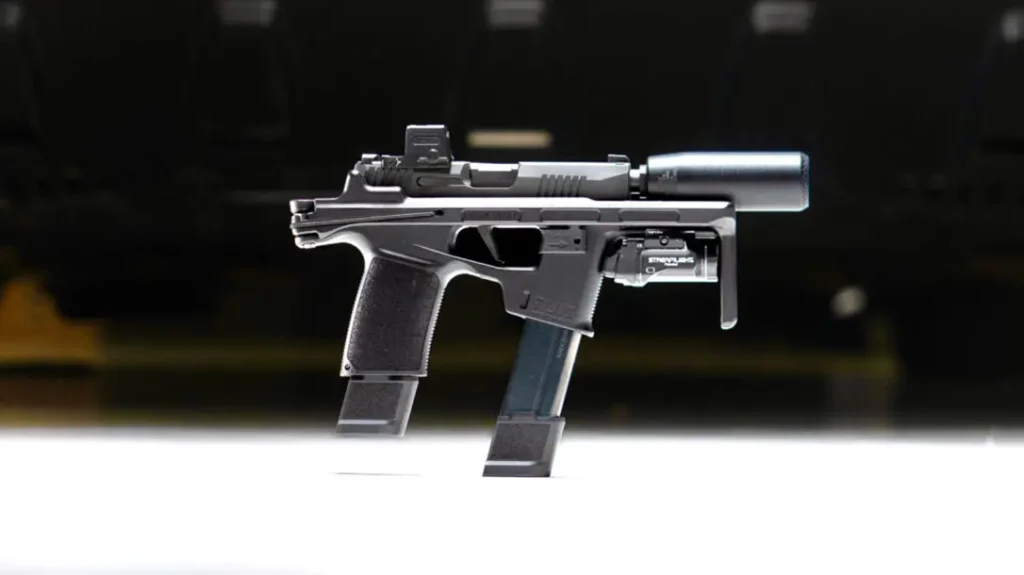The following is an op-ed from Donald Mihalek, the Executive VP of the Federal Law Enforcement Officers Association Foundation. We first reported on the Tulsa Police shooting in May when body cam footage first became available. Since then, the officer involved has been dubbed the Tulsa supercop. He loads his rifle while driving to the scene, engages in a fairly lengthy pursuit, and then drops the suspect with two well-placed shots through traffic. Watch the entire incident play out above.
Advertisement — Continue Reading Below
The Setting in Tulsa
A shots fired call is one of the most adrenaline-pumping calls a law enforcement officer can receive. It instantly gets the heart and mind racing. The response, and ultimately the outcome, often relies on the tactical mindset of the responding officer.
In Tulsa, Oklahoma, that call came in after a suspect went into a Cicis Pizza and fired at a man three times. Rounds struck the victim once in the shoulder. The suspect then allegedly went a few doors down to China Wok, acted erratic and shot another victim in the face. The suspect then fled to a nearby hotel. There he allegedly pointed the gun at a clerk, paced around madly and fled again.
Tulsa Supercop Response
The 9-1-1 calls came flowing in. Body cam footage shows the officers arriving at a chaotic scene and eventually locating the suspect running up onto I-44. Footage shows an officer carrying a patrol rifle, running toward the threat.
Advertisement — Continue Reading Below
There was a time when only SWAT teams carried rifles. However, following the 9/11 attacks, and with an uptick in active-shooter incidents, most departments in the U.S. implemented patrol rifles as a response tool for patrol officers. As this video shows, patrol officers often arrive on scene first and end a threat. To do so, they need the right tool, and many departments now equip their officers with that tool: the patrol rifle.
As the officer is running, he’s heard communicating with dispatch, giving direction and a situation report of the scene. While this sounds easy on the body cam footage, in reality this is a combination of observing, assessing, moving and communicating. The officers combines all facets of a person’s physiology. Add in the danger dynamic, which only heightens the stress responses of tunnel vision, time and motor distortions, and muscle memory through training becomes a critical skill set the officer relies on to overcome these natural deficiencies.
Tulsa Shooting Tested Officer
The mental and physical stress, combined with the training and tactical mindset, reinforce that officers need to be well trained and in good physical condition. Then they can execute an effective response to a deadly incident. Lacking any of these attributes could cost lives.
Advertisement — Continue Reading Below
In this incident, it took the responding officer only 29 seconds to cover the distance and assume good cover and a shooting position. As the officer arrived near the suspect, he smartly slowed his pace. He appears to crouch down and use the concrete divider as cover, getting an optimal position on the suspect. Again, the limitations of the body camera give only a partial view of the scene. However, the sounds and footage help us draw conclusions to what the suspect was doing what the officer was seeing.
In position, the officer slows his breathing. This is an important technique when taking a difficult shot with some distance. Within those two seconds, we hear two shots fired. The officer then closes the distance, taking another 11 seconds. The officer then radios dispatch “the suspect is down,” before commanding the suspect to “show me your hands.” Here again, the officer follows standard police techniques to ensure there is no additional threat. Next, the officer announces he can not identify the position of the gun, and he smartly awaits backup before attempting to re-position.
The Tulsa shooting suspect died on the scene. The local news, ktul.com, reported that “multiple witnesses said (the suspect) was firing at cars as he was in the middle of traffic.”
Advertisement — Continue Reading Below
The Tulsa supercop truly earned that distinction. This is the definition of a job well done.
























